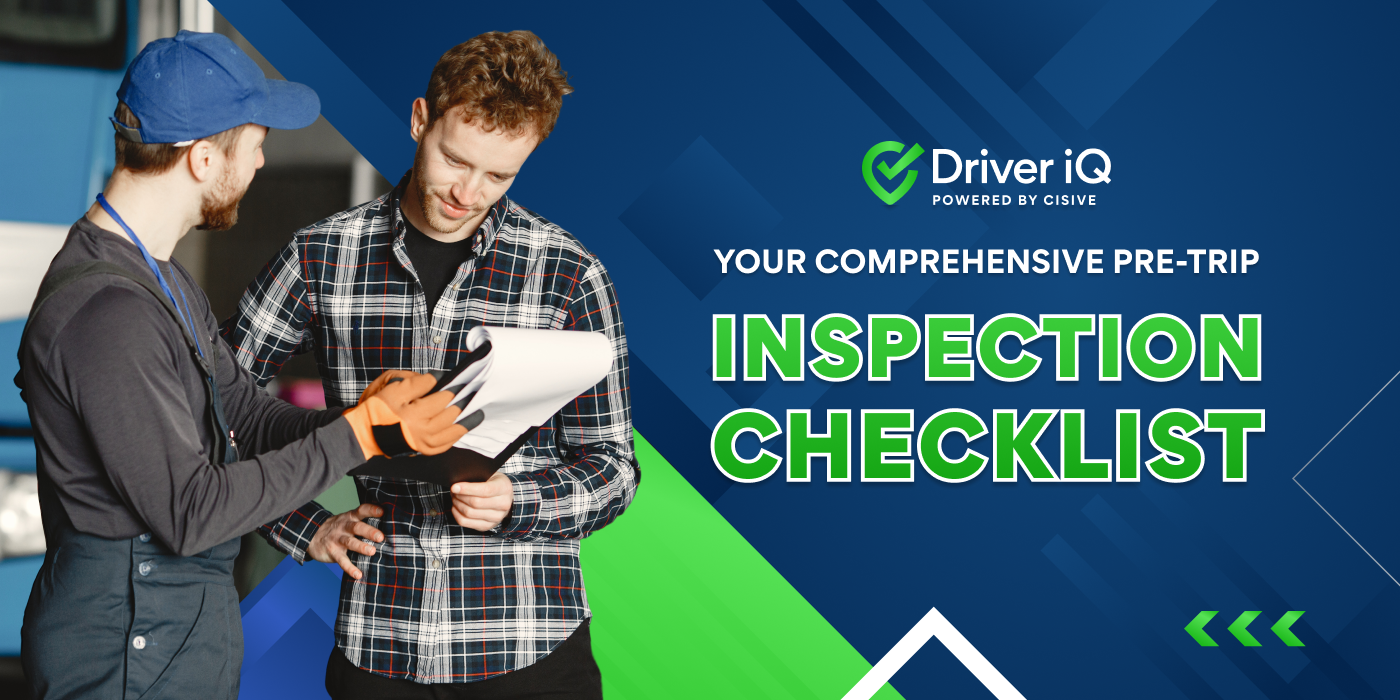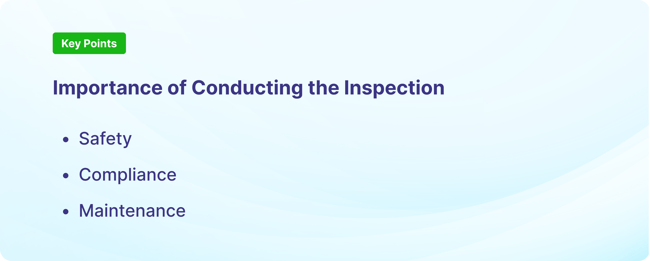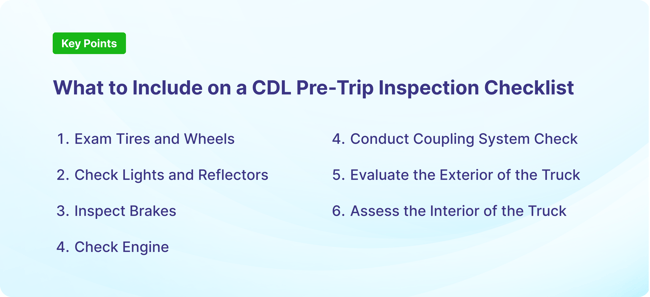

If you own or operate a trucking company, you already know how important it is to ensure your...

Pre-trip inspections are an everyday task for most Commercial Driver's License (CDL) drivers. Making sure the vehicle is ready for the road is both a safety and compliance issue.
While there is no standardized report that needs to be completed, truck drivers must have documentation showing that the inspection was done. They must also show if any issues were found and that these issues were taken care of properly.
Because it can be difficult to remember everything that should be included in a CDL pre-trip vehicle inspection, many truck drivers and trucking companies use checklists to track this inspection process.
This guide provides more information about the CDL pre-trip inspection process.
Anyone who works in the trucking industry can tell you how important it is to keep your truck in tip-top shape. To ensure your truck is always in good working condition, regular inspections are necessary.
In fact, this step is so important the government requires truck drivers to conduct inspections of their vehicles on a regular basis. To make sure they don’t miss anything, many truck drivers use a CDL pre-trip inspection checklist to ensure everything is examined carefully.
This article takes a closer look at everything you need to know about CDL pre-trip inspection checklists.
Key Takeaways
|
Truck drivers use CDL pre-trip inspection checklists to ensure all parts and systems on their vehicle are working properly before taking it out on the road.
Studies show that, on average, a truck accident occurs every 15 minutes across the United States. While truck drivers are not always at fault for these incidents, the fact that a fully loaded tractor-trailer can weigh as much as 80,000 pounds makes any accident dangerous.
To ensure the truck driver’s safety, as well as others on the road, the Federal Motor Carrier Safety Administration (FMCSA) requires CDL drivers to conduct pre-trip safety inspections before hitting the road. If any defects are noted, repairs must be made before taking the truck on the road.
This isn’t the only requirement. Truck drivers must also keep documentation showing that a CDL pre-trip inspection was completed prior to starting the trip.
Most trucking companies require drivers to complete a CDL pre-trip inspection checklist for two reasons:
Recommended Reading: Best DOT Compliance Services

There are a number of reasons why it’s so important for truck drivers to conduct a CDL pre-trip inspection every day, or in some cases, multiple times a day, including:
The most important benefit of conducting pre-trip inspections is the extra safety net it provides. Making sure the truck and all its components are in good working condition can prevent deadly and dangerous accidents.
Federal regulations require all CDL truck drivers to conduct pre-trip inspections. Failure to do so could result in hefty fines and delivery days. Multiple infractions could even result in the loss of your certification or CDL license.
Another great benefit of frequent pre-trip inspections is the ability to spot a minor problem with the truck before it becomes a larger, more costly issue. For example, replacing worn brake pads before they cause damage to the rotors can save you thousands of dollars over time.

While it’s easy to see the benefits of conducting regular pre-trip inspections, there are also a number of advantages to using a checklist to track this process.
This ensures that all pre-trip inspections cover the same elements and that each truck driver completes the same process.
Using a checklist requires drivers to check off each item as they inspect it. This can ensure a comprehensive inspection is completed every time.
Using a standardized checklist can provide truck drivers and trucking companies with documentation to prove this process was completed correctly.
Recommended Reading: Understanding DOTS Pre-Employment Drug Testing Requirements

Below is a brief look at the importance of each step in the pre-trip inspection, followed by a list of points to check.
It’s important to examine every tire and wheel on the truck to ensure they’re safe for road conditions.
This step can keep you and other drivers safe despite the time of day or weather conditions.
Properly working brakes are critical for truck drivers and must always be in good working condition.
A properly working engine can prevent downtime due to repairs and keep the truck safe on the road.
A secure and operational coupling system is critical for trucks carrying trailers. This safety check can ensure that there are no dangerous issues while hauling a load.
As part of your safety check, you should always take the time to walk around your truck and inspect the interior to ensure everything is in place.
You also should check the interior of the truck to make sure everything is in place and working properly.
Recommended Reading: Recruiting Truck Drivers
Having your drivers complete a commercial motor vehicle pre-trip inspection before heading out on the road each day or after picking up a new load can create an accurate and consistent process. This can improve the quality of your transportation services and avoid costly downtimes and delays.
However, conducting high-quality CDL pre-trip inspections starts with hiring the right workers. Driver iQ obtains driving records, conducts past employment verifications, runs criminal background checks, and provides other services to ensure you hire the right employee every time.
Contact Driver iQ to learn more about our screening and verification services for employers in the trucking industry.
Author: Michael Kapuschinsky
Bio: Product Manager with more than a decade of experience in the transportation industry.
Let's Connect on LinkedIn
If you own or operate a trucking company, you already know how important it is to ensure your...

Let’s say you’re ready to hire several truck drivers in advance of your busy season. Several great...

The transportation industry requires safe drivers. Keeping safe drivers in, and removing dangerous...